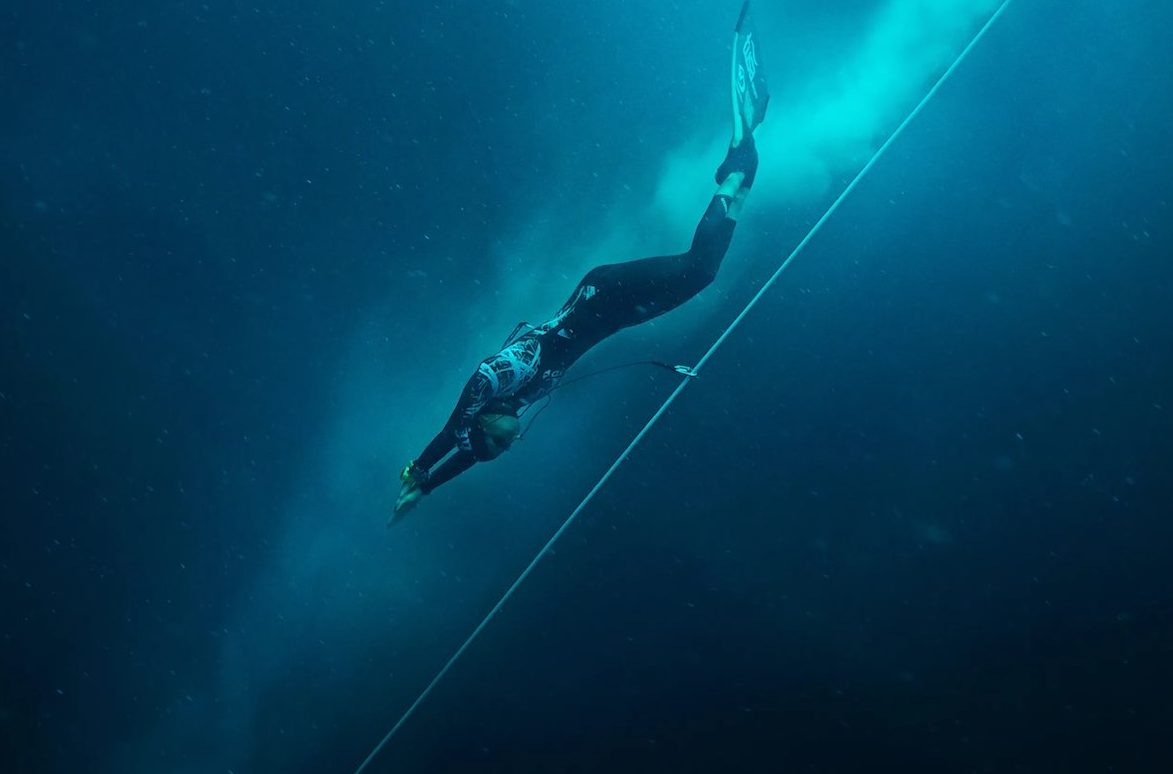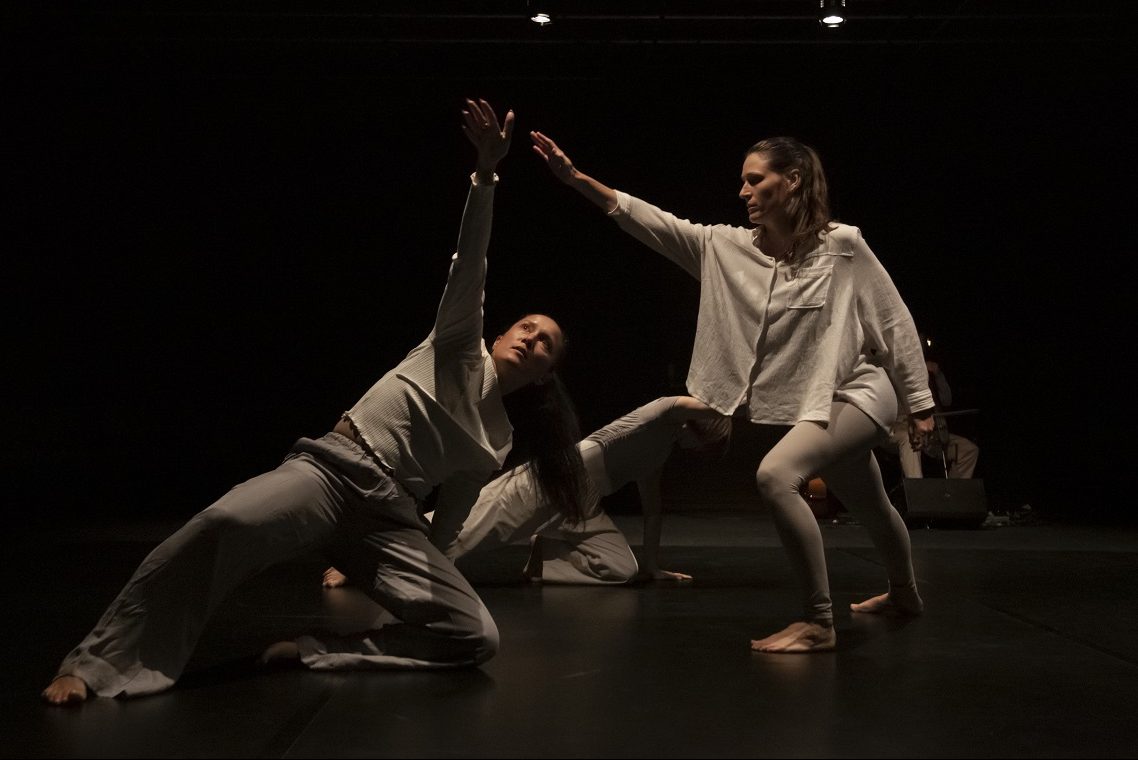
“Streaming” columnist NICK OVERALL slips on the flippers for a deep dive into a new Netflix documentary that he rates as one of its finest.
FIVE miles north of the Egyptian town of Dahab is a natural landmark that’s become known as “The Diver’s Cemetery”.

Located in the Red Sea, this submarine sinkhole stretches 120 metres beneath the surface and has claimed the lives of more than 200 daredevil divers who have attempted to reach its depths without the help of any safety equipment.
Also known as “The Blue Hole”, it’s the haunting and thrilling setting of Netflix’s new documentary film “The Deepest Breath”, which follows the dizzyingly intrepid individuals whose passion lies with the extreme sport of freediving.
Over years of work, they train themselves to hold their breath for as long as possible in pursuit of world record-breaking deep dives.
“The Diver’s Cemetery” is the ultimate conquest, one that includes a 26-metre-long tunnel at a depth of 56 metres below the surface which many divers have attempted to reach.
These depths are so intense that the divers can’t even wear goggles, as the pressure would cause blood vessels in the eyes to burst. That’s not to mention the risk of crushed lungs, ruptured ear drums and loss of consciousness.
So what on earth would possess someone to want to do such a thing? “The Deepest Breath” attempts to find an answer.
In the documentary’s opening minutes, champion Italian diver Alessia Zecchini is asked how she feels about death.
“Honestly I’ve never thought about it,” she candidly replies.
“I think if someone has to die they will.”
It’s a haunting and fascinating way to begin the ensuing journey. Over the following two hours, the doco charts Zecchini’s relentless endeavour to become the world’s greatest free diver.
The film also focuses on skilled “safety diver” Stephen Keenan, whose job is to accompany divers on the way down in order to help in the event of an emergency.
In order to reach these mind-boggling depths the divers explain they must “empty themselves”, performing an extremely fine balancing act where they have to remain focused yet keep their consciousness entirely tuned in to the very moment they’re in.
“Mental relaxation is the foundation of free diving,” as former world champion Natalia Molchanova describes it at one point in the film.
In 2015, Molchanova herself vanished while attempting a dive near Ibiza. At a depth of around 40 metres, it’s believed a strong change of current was responsible for the champion never returning to the surface. While her death sent shockwaves through the freediving community, it wouldn’t deter Zecchini, who was only a teenager at the time, but who was still inspired by the records she’d seen the world champion achieve.
In many ways, the documentary feels similar to “Free Solo” (on Disney Plus), which told the true story of free climber Alex Honnold, who climbed one of the tallest and most infamous cliff faces in the world without any safety equipment to assist him.
But if “Free Solo” was about going up, “The Deepest Breath” is about going down. The shots of the ocean and its depths here are head-spinning and awe-inspiring, the surface increasingly elusive with each metre – Zecchini herself at one point describing it as “dark, like you’re locked inside”.
Coming just weeks after the OceanGate submarine disaster, which transfixed the world, the stunning cinematography is also likely to stir interest with deep-sea dread at a renewed high (some Netflix subscribers may have noticed “Titanic” has recently been back in the trending charts in recent weeks as well).
“The Deepest Breath” represents one of the platform’s finest documentaries and makes for a stunning watch on the small screen. For those who don’t know the full story of what happened to Zecchini and Keenan, it’s worth watching without researching first to truly take in the full extent of this astonishing tale. Either way, it’s no overstatement to say this is one film that will have audiences holding their breath.
Who can be trusted?
In a world of spin and confusion, there’s never been a more important time to support independent journalism in Canberra.
If you trust our work online and want to enforce the power of independent voices, I invite you to make a small contribution.
Every dollar of support is invested back into our journalism to help keep citynews.com.au strong and free.
Thank you,
Ian Meikle, editor



![Teacher Vanessa Jones has been living in Higgins since 2001, and while she loves the area, she says she is “fed up” with the neglectful ACT government.
The Higgins shops have been completely abandoned, says Vanessa, preventing the opportunity for residents to have a community-centred space to socialise.
They only received bins nine months ago, she says, and requests for a water station and repairs to the bus station have gone unanswered.
“It’s very, very slow,” says Vanessa.
“I asked for the zebra crossing on Fullagar [Crescent] to be repainted, and we had to wait about six or nine months.
“That’s just such a long time… we pay a lot of rates.”
Vanessa says assistance from the government only seems to go to communities with time-rich and assertive communities, leaving places such as Higgins, where the majority of households have both adults working full-time and English may not be the first language of the family, at an automatic disadvantage.
“If you’ve got two people working, paying a mortgage, raising two or three kids, they don’t have the time,” says Vanessa.
Vanessa says the lack of attention quieter places such as Higgins is receiving is starting to look a lot like favouritism.
Read the full article on our website citynews.com.au
#canberra #canberranews](https://citynews.com.au/wp-content/plugins/instagram-feed/img/placeholder.png)
Leave a Reply